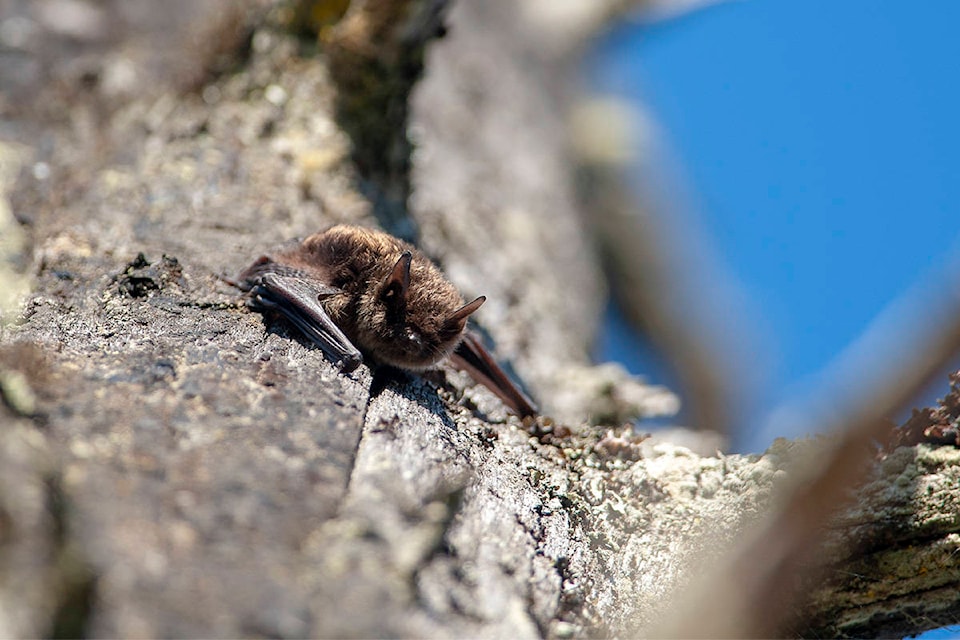Yukoners will once again be working on their carpentry skills while also doing their part for the local bat population as Yukonstruct and Yukon Wildlife Viewing get set to host a bat house building workshop Aug. 11.
“It’s a fun little project,” Ulrich Trachsel, Yukonstruct’s Makespace programming coordinator, said in an Aug. 3 interview.
As stated on Yukonstruct’s event listing: “Together with a specialist from Yukon Wildlife Viewing, we’ll learn about the biology and conservation of these small, flying mosquito-eaters, how bat houses are helpful, and where to place your bat house.”
Yukonstruct and Yukon Wildlife Viewing have been offering both bat house and birdhouse building workshops together for a few years now, going back to when Yukonstruct was starting out in its original space in Marwell.
At that time, Yukonstruct ran a series of workshops around wildlife where participants could learn to build bat and birdhouses, fly-tying techniques and other such skills.
Yukon Wildlife Viewing got involved with the bat house building sessions, offering information about bats in the Yukon, the impact bat houses have on the population and how they should be installed once built.
“It started this partnership,” Carrie McClelland, wildlife viewing biologist with Environment Yukon, said in an Aug. 3 interview of those early workshops.
That partnership has continued over the years with the two organizations typically hosting a bat box-building workshop each spring as wildlife emerges from winter hibernation, along with a bird box building workshop shortly after as well.
This spring, both workshops were initially cancelled due to COVID-19. Materials had already been prepped and were kept on-hand until things changed and the workshops could happen again.
With guidelines now in place and events like workshops able to go ahead provided guidelines are met, both workshops were able to be scheduled again for this month. The birdhouse building workshop will be held a week after the bat house building workshop.
Participants will be asked to wash their hands as soon as they enter Yukonstruct’s downtown space and are encouraged to wear a fabric or dust mask to reduce the spread of anything and protect them from woodshop dust. Anyone who is sick or has a fever, cough or shortness of breath is asked to stay home.
There are also strict limits on numbers with a maximum of eight participants and two instructors, who will be wearing masks. Previous workshops have seen close to a dozen participants take part.
McClelland said part of Environment Yukon’s work is to look for opportunities where Yukoners can become stewards, taking action to help wildlife.
The workshops fit that goal very well, something that’s important as the little brown myotis bat — once the most common bat in the Yukon — is listed as endangered.
While the Yukon population continues to be healthy, elsewhere the bats are victims of white-nose syndrome, a fungus growth in bat caves that causes bats to wake up in the midst of hibernation. The bats often fly around looking for food — insects — at a time of year that food isn’t readily available, the bat population then starving and dying.
The little brown bat has gone from being the most common type of bat in North America to an endangered species.
In the Yukon, bats don’t live in large bat caves where the fungus may grow, but rather are known to roost in buildings such as abandoned cabins, attics, roofs and under siding. When a bat house is properly in place, it can mean bats stay away from other parts of a home in favour of the bat houses.
There is concern though as Yukon bats go elsewhere (exactly where is unknown) to hibernate for the winter.
“It’s really tragic,” McClelland said of the white-nose syndrome, highlighting the 99 per cent mortality rate of bats affected by white-nose syndrome.
There are many benefits to having a bat box, McClelland said, pointing first to the high numbers of mosquitoes the Yukon is seeing this year.
“Just look at those mosquitoes,” she said as she described the natural pest control the bats provide.
Having a bat box properly installed in the right spot on your property also means you’re likely to avoid having a colony of bats moving into an attic or elsewhere inside a home.
“People are always excited about making something,” Ulrich said. “It’s very gratifying.”
After learning about bats from Yukon Wildlife Viewing and building the bat houses, participants take home the bat houses with detailed instructions on how and where to install them.
Participants can register for the workshop here.
Contact Stephanie Waddell at stephanie.waddell@yukon-news.com
